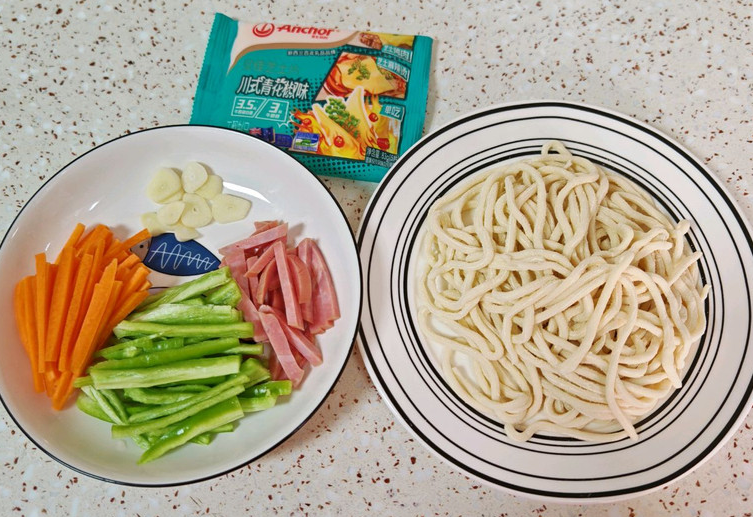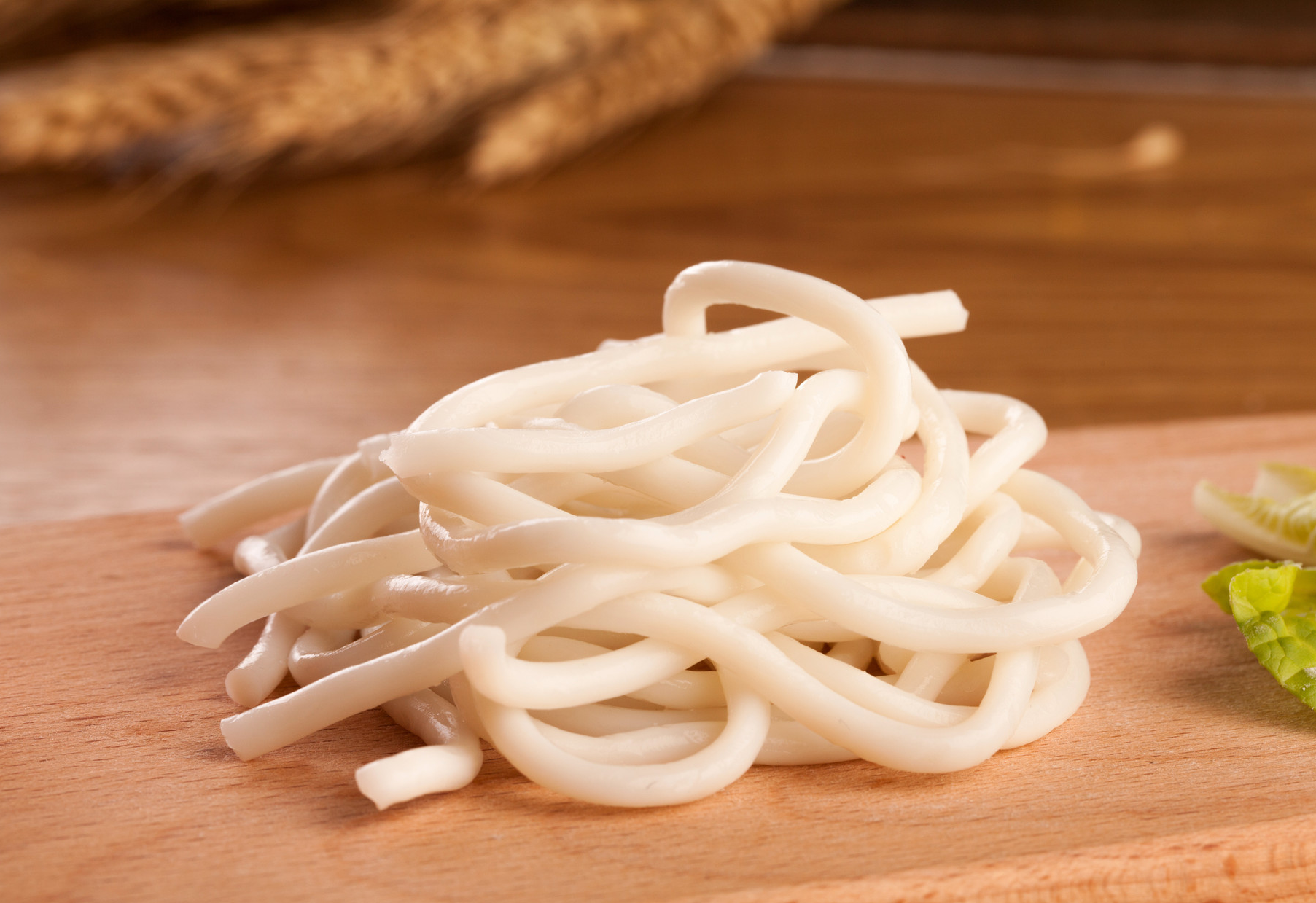Stick Noodles Recipe
Delicious stir-fried noodles are here! This dish is a dream come true for noodle lovers, combining springy noodles with a variety of flavorful ingredients. It’s simple to make and tastes absolutely incredible. Every bite is packed with happiness! Whether you're looking for a satisfying main meal or a late-night snack, this dish is perfect. Let’s dive in and make this mouthwatering delight together!

 1 Comments
1 Comments
Stir-fried noodles are a classic Chinese stir-fry dish made with cooked noodles as the base. You can customize it with ingredients like chicken, beef, shrimp, bean sprouts, or greens to suit your taste. Common seasonings include soy sauce, oyster sauce, minced garlic, and ginger. The process is relatively quick and simple, making it perfect for everyday family meals.
1.Ingredients and Substitutions
Fresh Noodles: The main ingredient for carbs and texture; can be substituted with dried noodles or instant noodles.
Carrot: Adds color, nutrition, and a crisp texture; cucumber or bell peppers work as substitutes.

Luncheon Meat: Adds protein and a savory flavor, making the dish more hearty; you can use ham slices or chicken strips instead.
Light Soy Sauce: For seasoning and color enhancement; regular soy sauce can be used as a substitute.
Salt: Balances the savory flavor; chicken bouillon can be used as an alternative.
Garlic: Adds aroma and depth; can be replaced with scallions or ginger.
Green Pepper: For freshness and nutrition; onions or red bell peppers make great alternatives.
Cooking Oil: Used to stir-fry ingredients; vegetable oil is a good substitute.
Soy Sauce: Enhances color and flavor; dark soy sauce can be used for a richer color.
Cheese: Adds a creamy flavor; Parmesan cheese is a suitable alternative.
2.Types of Rice Noodles
Rice noodles, made primarily from rice, come in many varieties. Here are some common types:
Wide Rice Noodles
Characteristics: Wide and smooth in texture, typically used in stir-fried or soup dishes.

Usage: Commonly found in Thai dishes like Pad Thai or Vietnamese Pho.
Thin Rice Noodles
Characteristics: Narrow and delicate, typically used in soups or salads.
Usage: Ideal for cold noodle salads or in broth-based soups.
Rice Vermicelli (Mi Xian)
Characteristics: Usually round with a slight springiness, often used in hot pots or stir-fries.
Usage: Widely used in dishes like Yunnan Mi Xian or Vietnamese rice noodle dishes.
Rice Paper Sheets
Characteristics: Made by soaking rice, grinding it into a paste, and steaming into thin sheets; commonly used for making rice rolls.
Usage: Popular for rice paper rolls or fresh spring rolls.
Rice Stick Noodles
Characteristics: Similar in shape to spaghetti, used in stir-fries or soups.
Usage: Versatile, found in various Asian dishes.
Steamed Rice Noodles
Characteristics: Thin and translucent, created by steaming rice noodle batter.
Usage: Often used in dim sum dishes like steamed rice noodle dumplings.
Rice Flour Pancakes
Characteristics: Made by mixing rice flour into a batter and frying until crispy outside and soft inside.
Usage: Enjoyed as a snack or side dish.
3.How to Make the Perfect Stir-Fried Noodles
To create the perfect stir-fried noodles, follow these key steps:
Choose the Right Noodles: Opt for noodles made from high-gluten flour to ensure a firm, springy texture.
Prepare the Noodles: Cook noodles to about 70-80% doneness, then rinse under cold water to prevent sticking.
Select Toppings: Use a mix of luncheon meat, carrots, and green peppers for added flavor and nutrition.
Control the Heat: Stir-fry over high heat, cooking the vegetables first to release their aroma.
Stir-Frying Technique: Once the noodles are softened, add the toppings, and season at the end.
Balance Seasonings: Use seasonings in the right proportions to avoid overpowering saltiness.
Boost Flavor: Finish with minced garlic and a splash of vinegar for added fragrance and depth.
4.Can Stir-Fried Noodles Be Vegetarian
Absolutely! This stir-fried noodle dish can easily be made vegetarian. Simply omit the luncheon meat and add vegetables like bean sprouts and potatoes for a nutritious, low-fat option. For an even lighter version, you can skip the cheese as well, keeping the noodles fresh and healthy.
5.How to Store Stir-Fried Noodles
After cooking, place the stir-fried noodles in an airtight container for storage. If you plan to eat them within 1-2 days, refrigerate. For longer storage, freeze the noodles to keep them fresh for several weeks. When reheating, whether from the fridge or freezer, add a small amount of water or oil to prevent the noodles from drying out. You can use a microwave, steamer, or skillet to warm them up evenly.
6.More Delicious Noodle Recipes to Try
Here’s a detailed step-by-step guide to making delicious stir-fried noodles! Follow along and give it a try!
If you enjoy our recipes, be sure to subscribe to our official newsletter. We’ll keep bringing you more high-quality recipes and culinary tips!
INGREDIENTS
MAIN INGREDIENTS
- 150g fresh noodles
ACCESSORIES
- 50g carrot
- 1 slice of luncheon meat
- 1 clove of garlic
- 30g green bell pepper
SEASONINGS
- 2 tablespoons light soy sauce
- ½ tablespoon salt
- 20ml cooking oil
- 1 tablespoon soy sauce
- 1 slice of cheese
DIRECTIONS
STEP 1
Prepare 150g of fresh noodles.

STEP 2
Cook the noodles until they're about 90% done, then drain and rinse them under cold water to stop the cooking process. Set aside to drain.

STEP 3
Prepare the vegetables: Slice 50g of carrot, 1 piece of luncheon meat, 1 clove of garlic, and 30g of green pepper, and set aside.

STEP 4
Heat 20ml of cooking oil in a wok, then add the garlic slices and stir-fry until fragrant.

STEP 5
Add the carrots, green peppers, and luncheon meat, and stir-fry until they change color.

STEP 6
Add 2 tablespoons of light soy sauce, then toss in the cooked noodles and stir until evenly combined.

STEP 7
Finally, add 1 tablespoon of dark soy sauce and ½ tablespoon of salt to season, and stir-fry until everything is well mixed.

STEP 8
Plate the dish, and enjoy your delicious stir-fried noodles!

Frequently Asked Questions:
1.How do you cook stick noodles?
Boil water in a pot.
Add stick noodles and stir gently.
Cook for about 6-8 minutes or as per package instructions.
Test for doneness by tasting a strand (noodles should be tender but slightly firm).
Drain and rinse cooked noodles with cold water.
Use in your preferred dish, like stir-fries or noodle soups.
2.What are rice stick noodles used for?
Rice stick noodles are commonly used in Asian dishes such as stir-fries, noodle soups, spring rolls, salads, and curries. They add a chewy texture, absorb flavors well, and are versatile in various recipes.
3.What is the secret ingredient in Chinese noodles?
The secret ingredient in Chinese noodles can vary depending on the specific dish, but one common ingredient that adds a unique flavor is sesame oil. It's often used as a finishing touch or drizzled over the noodles to enhance the taste. Other common ingredients include soy sauce, garlic, ginger, and various spices and seasonings. Ultimately, the choice of ingredients depends on the specific recipe and personal preference.
4.What causes noodles to stick together?
Cause: Noodles may stick together if they are overcooked or if the moisture hasn’t evaporated completely during stir-frying.
Solution: Cook the noodles until they are about 90% done, then immediately rinse them under cold water to remove excess starch, preventing them from sticking together.
Recipe analyzer
- Recipes: Stick Noodles Recipe
- Main Ingredients:5
- Servings per recipe:1
- Servings size:262 g
-
Energy (calories):260 kcal
-
Protein:9.75 g
-
Fat:2.02 g
Why gray?

-
Carbohydrates:50.55 g
-
Protein: 14%37 kcal
-
Fat: 7%18 kcal
-
Carbohydrates: 79%205 kcal

The ratio shows whether the proportion of both fatty acids in your diet is optimal. Red color means too much of Omega 6 or too little of Omega 3. The data are rounded off and approximate.











1 REVIEWS